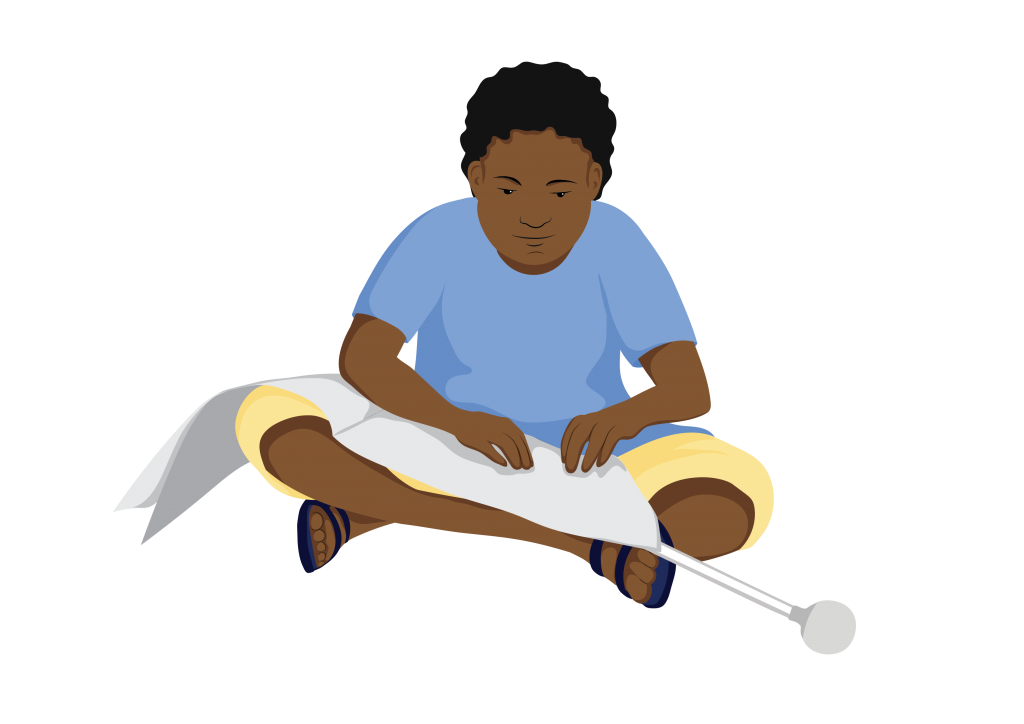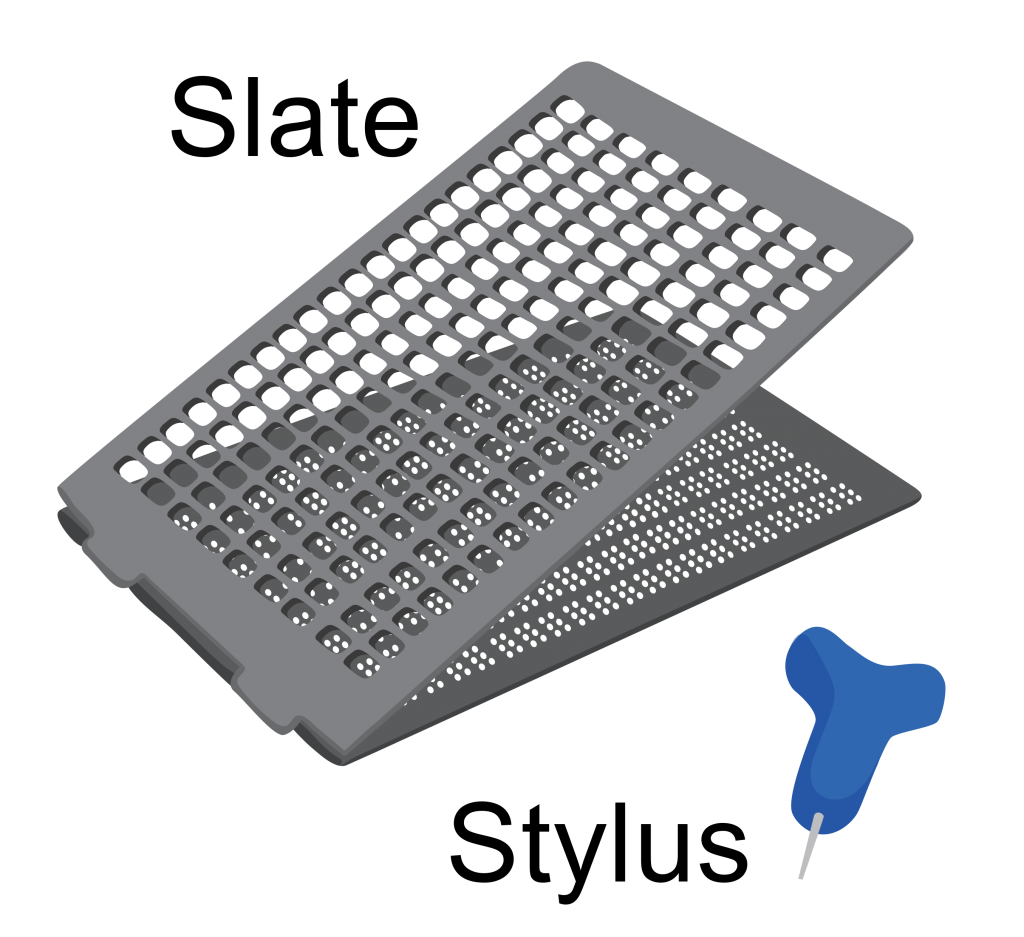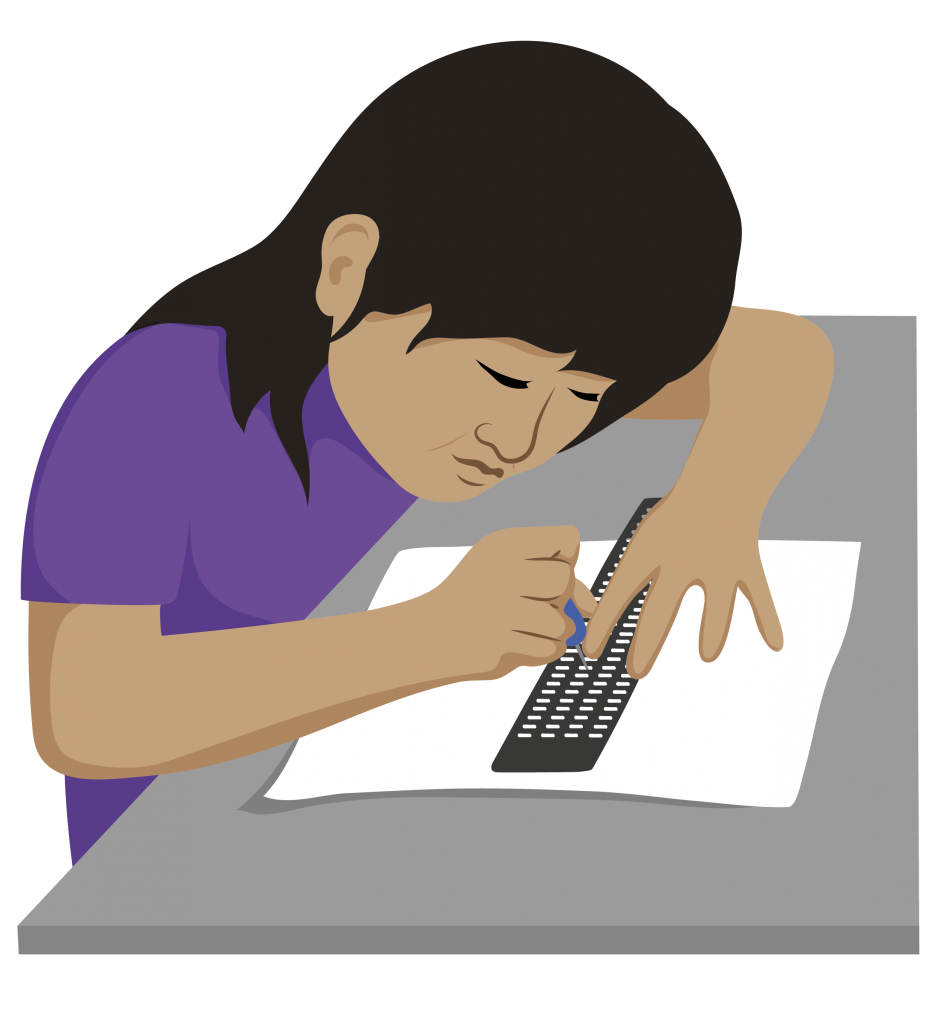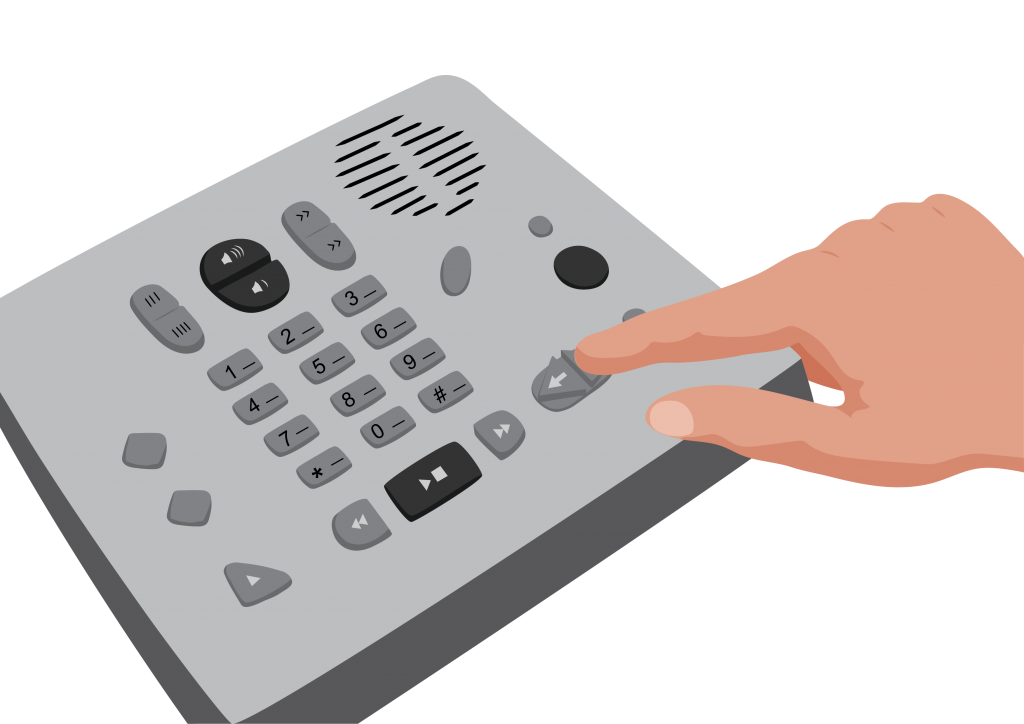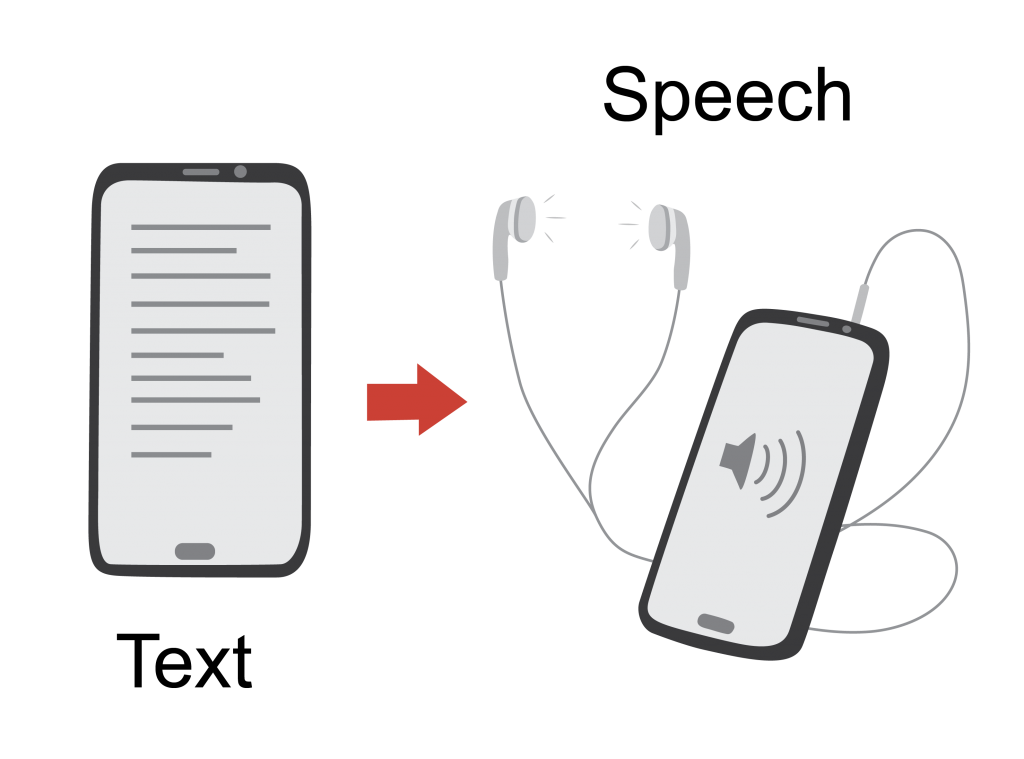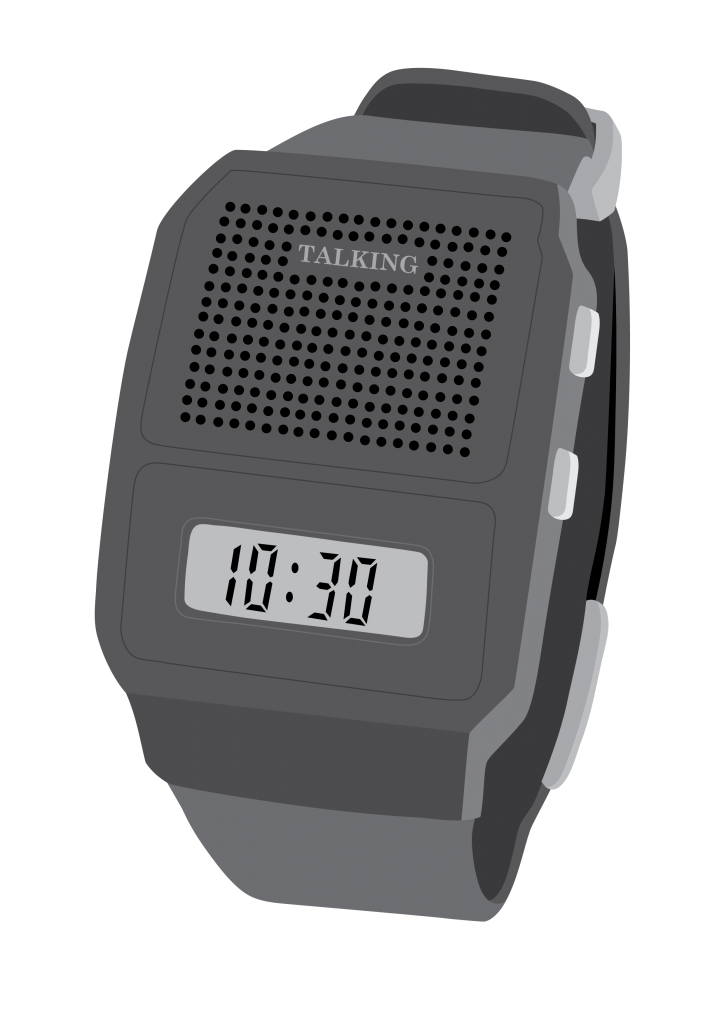Vision
Vision assistive products that use hearing or touch
Some assistive products rely on a person using hearing or touch.
These are usually used by people with very low vision or who are blind.
Assistive products that rely on a person using hearing or touch include:
- Braille slate and stylus.
This is a portable note taker for people who write and read braille.
The top part of the slate has rows of small ‘windows’, and the bottom part has six small depressions for each ‘window’. A piece of paper is placed between the two parts of the slate. The stylus, which is a pointed tool, is pressed into the depressions in each window to create raised dots on the other side of the paper.
Different combinations of dots symbolise different letters.
- Audio players that allow people to hear written text.
- Text to speech software on smart phones and other devices.
- Talking and/or touching watches that people use to hear or feel the time.
Consent for use of information
Please let us know if you give consent for information collected during this training to be used for future reporting and research activities.
Check yes or no to each question below. If you select no, you are still very welcome to continue the training.
2. I understand that my de-identified information collected during this training (including this registration form, online feedback survey, quiz results and discussion forum) will be used in reporting and research to help improve TAP and improve access to assistive technology, and I give my consent for this.
Page
of
Show / Hide lesson topics
Page
Previous page
Next page
Show / hide menu
completed
not completed
in progress
not started
Expand All
Collapse All
module lessons
Search results pagination
Login
Username or email address
Password
Lost password
Main content anchor
Search
Close search
Lesson navigation
breadcrumb
Module menu
Topic navigation
See all
Menu
Site menu
User account related
Group secondary navigation
opens in a new tab/window
